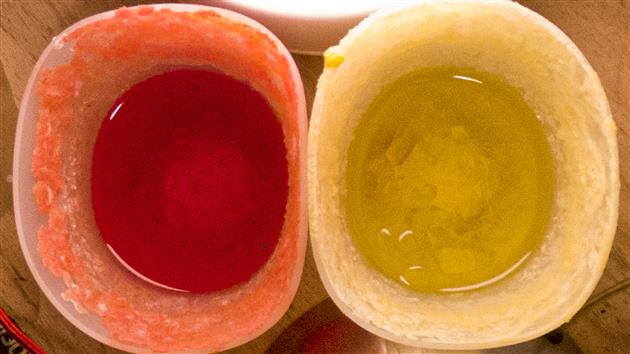Adobe Super Resolution Timelapse (Crystal Growth)
This is the third batch of crystals from our National Geographic Mega Crystal Growing Lab kit (see the previous two).
I have been meaning to experiment with Adobe's Super Resolution technology and this seemed like a good project for it. The video below has the same timelapse sequence repeated three times. If you're not bored of crystals growing yet you soon will be (don't worry, this is the last for now). The first version is a 2x digital zoom - a 960x540 crop of the original GoPro footage. The second version uses Super Resolution to scale up to full 1920x1080 HD. Finally I added both side by side so you can try to tell the difference.
Super Resolution generates a lot of data. I tried to use it once before for a longer sequence and realized that I didn't have enough hard drive space to process all the frames. In this case I upscaled the 960x540 JPEGs which went from 500K to 13MB, quite a jump. I don't see a huge difference in the side by side video though and wouldn't go through the extra steps based on these results. It's possible that going to JPEG before applying super resolution didn't help with quality. It's also possible that Adobe doesn't train its AI on a large array of crystal growth photos so I can imagine it might work better for a more traditional landscape timelapse. I'll test both these hypotheses together the next time I 10x my storage.
Related Posts
(Published to the Fediverse as: Adobe Super Resolution Timelapse (Crystal Growth) #timelapse #crystals #ml #video Time lapse using Adobe Super Resolution to upscale each frame before creating the video (source is crystals growing over two weeks with photos every five minutes). )
Crystal World
A timelapse of four containers growing crystals from the National Geographic Mega Crystal Growing Lab. The sequence was shot over two weeks (one frame every four minutes, running at 60 frames per second).
It should have taken less time. They recommend a growing area that is at least 68 degrees. This shouldn't be a problem with most of the country suffering record temperatures under heat domes if not actively burning in record breaking wildfires, but San Francisco is experiencing its coldest summer in more than five decades so two weeks seems like the minimum.
Other than not attempting to grow crystals in San Francisco, the other lesson learned is that you really want to use the two silicone cups included in the kit. We tried a pint glass that just grew fuzz (possibly due to the age and pitted nature of the glass) and a jam jar that grew cute small crystals that then made a decent attempt at escaping down the outside. I think three weeks and it would be a full J. G. Ballard situation.
Updated 2021-09-04 18:54:
Second batch. This time shot from above. It's still cold, so this is three weeks, 5 min interval and 60 frames per second for the timelapse:
Updated 2021-09-12 12:57:
Third batch. We're well into September but San Francisco is still bathed in fog. This is still at 5min per frame, but only took two weeks as I moved the lights closer in. For this timelapse I experimented with Adobe Super Resolution so the video has the same sequence three different ways (I wrote a separate post on the Super Resolution experiment).
Related Posts
- Adobe Super Resolution Timelapse (Crystal Growth)
- Timelapse, Week of Jan 10
- Super Flower Blood Moon Eclipse
- West Portal Timelapse of Timelapses
- West Portal Mosaic Timelapse
(Published to the Fediverse as: Crystal World #timelapse #crystals #video Timelapse of growing crystals from the National Geographic Mega Crystal Growing Lab shot over two weeks (photo every 4 mins, video at 60fps). )

